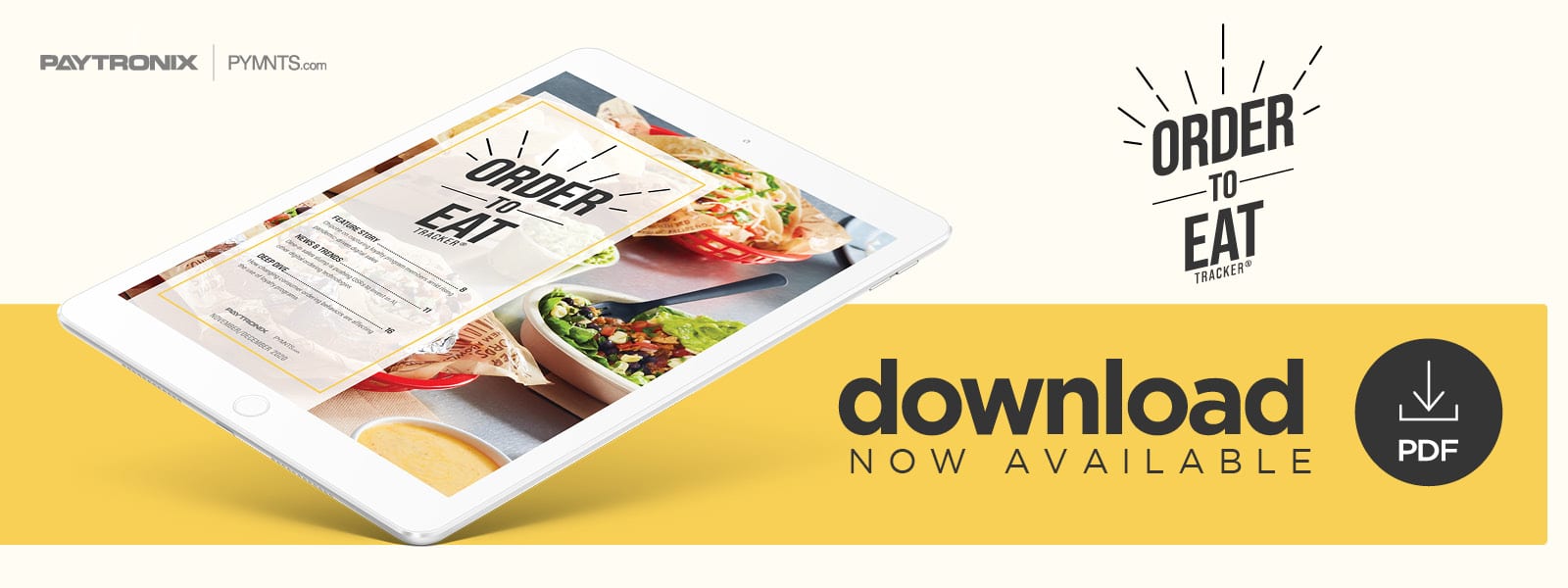Deep Dive: Why QSRs Should Lean On Loyalty To Personalize Mobile, Online Dining

Consumers were unwilling to give up their favorite restaurants during the first few months of the COVID-19 pandemic, and this trend has continued eight months into the health crisis. Recent PYMNTS research found that 31.6 million U.S. consumers shifted from dining in to ordering out when the pandemic began and approximately 26 million of these customers plan to keep ordering food online once it ends.
Customers in rural areas, smaller towns and larger urban areas have all responded differently during recent interactions with restaurants, however, as have members of different generations. This means quick-service restaurants’ (QSRs) abilities to offer personalized dining and ordering services are critical to satisfying consumers with varying preferences.
The following Deep Dive examines how the ordering behaviors of consumers from different communities have evolved in recent months and explores how their use of loyalty and rewards programs is changing. It also explains why competitive QSRs must localize their approaches to meet customers’ needs.
Localizing Digital Dining
Consumers’ pivot to online ordering affords a massive opportunity to QSRs that could help them engage with and retain millions of customers, but restaurants must carefully consider how individuals in different regions and of varying ages are using online and mobile ordering options as well as the tools they value. Online engagement differs significantly between more-populated and less-populated areas, for example. Recent PYMNTS research reveals that 16.3 percent of U.S. consumers living in larger cities have moved to ordering from QSRs online but only 5.5 percent of those living in small towns have done the same.
Leveraging the same digital strategies to target consumers in large cities and smaller towns could therefore put QSRs at a disadvantage. An aggressive online marketing or customer engagement strategy will likely have less impact in smaller towns, for example, while in-person approaches are likely to face lukewarm reception in large cities. Coordinating responses and tools that speak to the preferred ordering methods of consumers in all locations is key but far from the only factor that restaurants must consider when personalizing their online ordering methods. Consumers from different generations also interact with QSRs in specific ways, emphasizing certain online features depending on their age brackets.
Recent PYMNTS data found that baby boomers are more interested in being able to pick up orders without standing in lines, for example, as 10.4 percent of this group cite interest in this feature compared to 3.7 percent of Generation Z consumers. These shares are flipped when it comes to the importance of being able to order via mobile apps, however, with 9.2 percent of Gen Z reporting interest compared to 3.2 percent of baby boomers. Digital strategies must therefore reflect generational as well as geographical distinctions among consumers. QSRs could bridge many of these gaps with one tool in particular: loyalty programs.
Bringing Personalization To The Loyalty Game
U.S. consumers place a great degree of importance on loyalty programs. A recent PYMNTS survey shows that the main reason consumers are not using loyalty programs is because they do not exist. The research revealed that 38.7 percent of respondents who are not currently using such offerings cite programs not being offered as the reason. Many consumers also report being drawn to the digital ordering space by promos or other incentives. One recent study found that 80 percent of consumers would be more likely to order online or via mobile apps if eateries rewarded them for doing so. Another 37 percent of consumers surveyed also agreed that they would be interested in ordering from QSRs that offered rewards for ordering remotely or in other ways that aid public safety.
QSRs must get the loyalty factor right to keep customers engaged, but it is important to note that program usage is split along geographic lines. PYMNTS’ research found that 52.4 percent of those in larger urban areas were already using loyalty programs while only 35.8 percent of individuals in small towns said the same. This further highlights that QSRs must tailor their loyalty offerings and overall digital strategies to residents of different areas.
The COVID-19 pandemic will continue to prompt intriguing shifts in the restaurant world, especially if the trend toward embracing digital dining continues as expected. QSRs must adapt to an industry in which diners are seeking restaurants that can provide unique offers and rewards in specific and personalized ways that consider their age and location.
